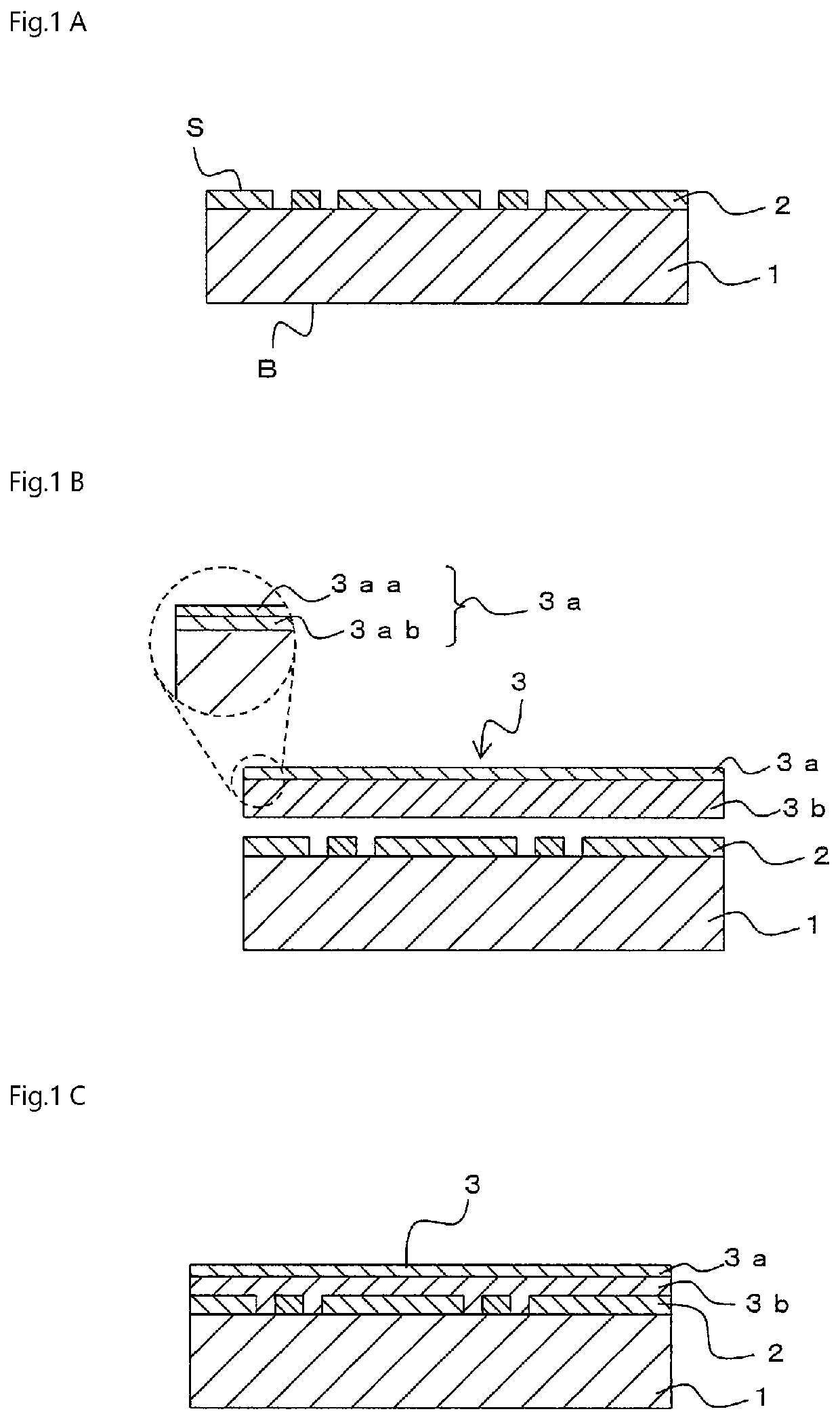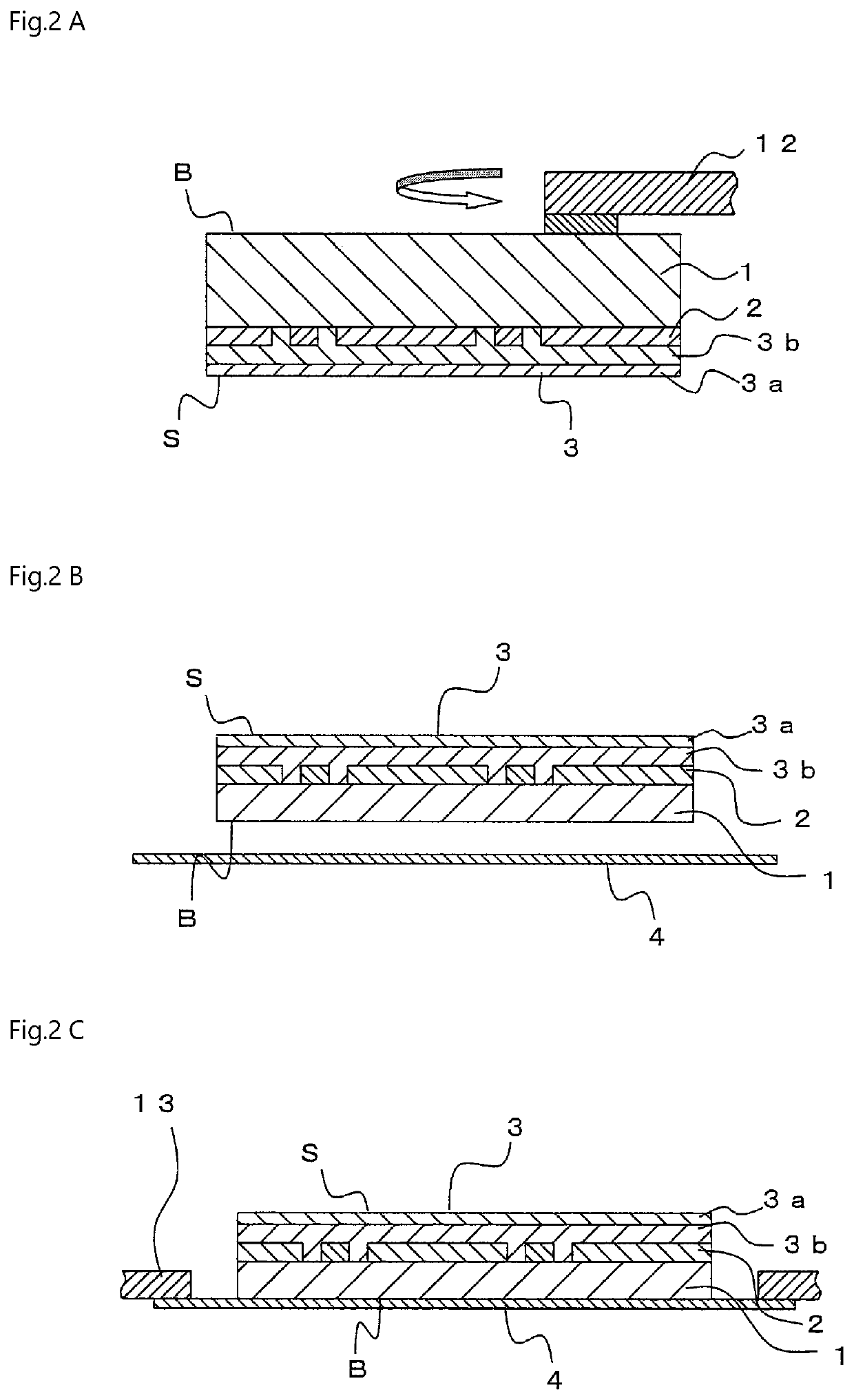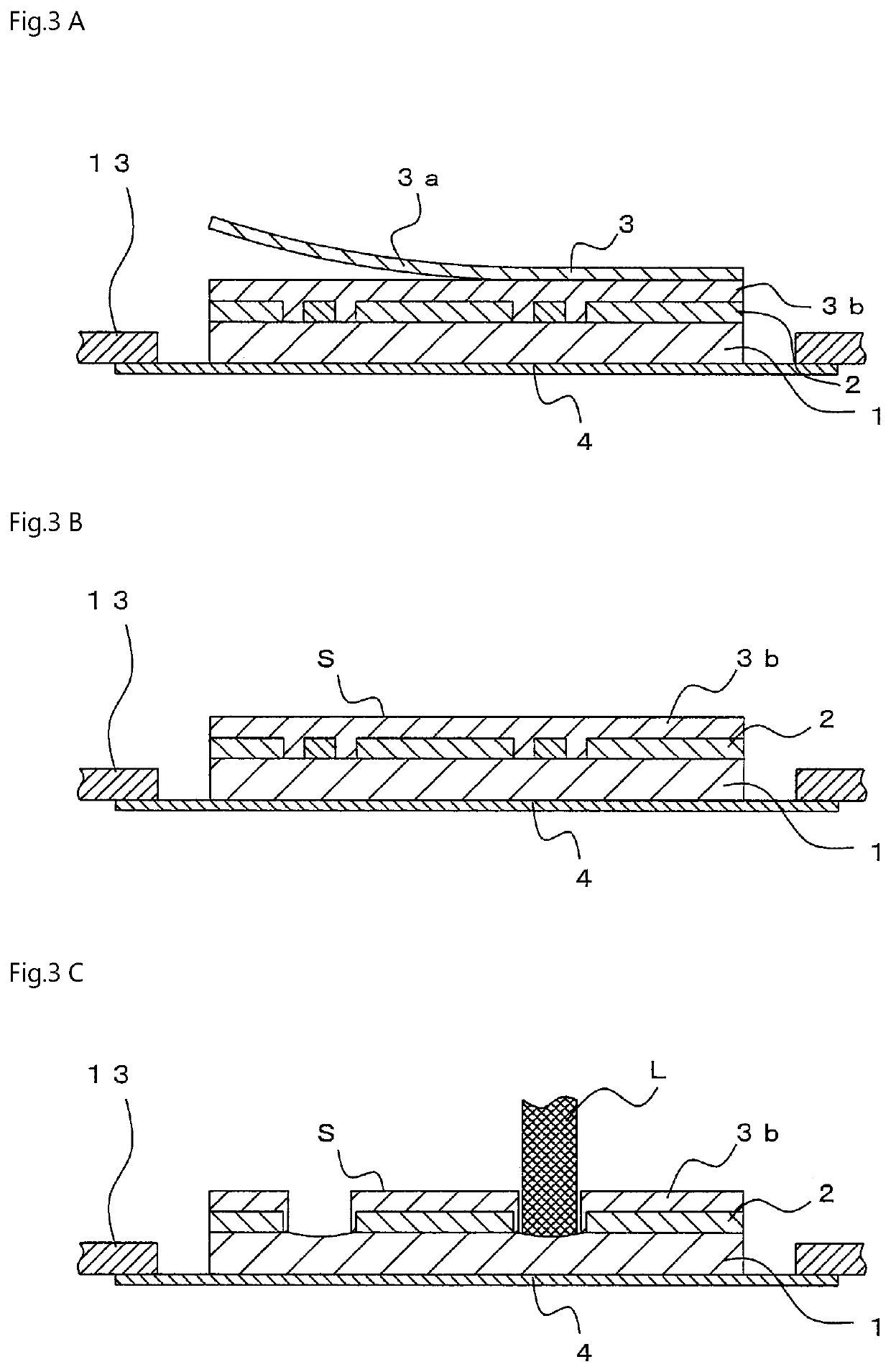Method for producing semiconductor chips
a technology of semiconductor chips and semiconductor chips, applied in the direction of manufacturing tools, solid-state devices, laser beam welding apparatus, etc., can solve the problems of small yield, damage to the circuit pattern of the chip, and the appearance of the semiconductor chip is affected, so as to reduce the cost of the chip, suppress the occurrence of defective chips, and shorten the whole treatment process
- Summary
- Abstract
- Description
- Claims
- Application Information
AI Technical Summary
Benefits of technology
Problems solved by technology
Method used
Image
Examples
first embodiment
[0050]A first embodiment of the producing method of the present invention will be described with reference to FIG. 1 to FIG. 5. A semiconductor wafer 1 includes a patterned surface 2 on which a semiconductor element circuit or the like is formed on a top surface S thereof (see FIG. 1A). On the side of the patterned surface 2 of the semiconductor wafer 1, a mask-integrated surface-protective tape 3 is pasted (see FIG. 1B). Accordingly, the semiconductor wafer 1 having the patterned surface 2 covered with the mask-integrated surface-protective tape 3 is obtained (see FIG. 1C).
[0051]The mask-integrated surface-protective tape 3 includes a surface protective tape 3a, which is a laminate of a substrate film 3aa and a temporary adhesive layer 3ab, and a mask material layer 3b, which is provided on the temporary adhesive layer 3ab. That is, the mask-integrated surface-protective tape 3 has the surface protective tape 3a and the mask material layer 3b that is provided on the surface protect...
second embodiment
[0101]A second embodiment shown in FIG. 6A to 6C is different from the first embodiment in that the second embodiment includes a step of curing the temporary adhesive layer 3ab by irradiating radioactive rays such as ultraviolet rays onto the mask-integrated surface-protective tape 3 before the step of peeling off the surface protective tape 3a in the above-mentioned first embodiment. The other steps are the same as the first embodiment.
[0102]That is, firstly, the mask-integrated surface-protective tape 3 is pasted onto a side of the top surface S of the semiconductor wafer 1, the wafer fixing tape 4 is pasted onto the grinded back surface B of the semiconductor wafer 1, and the semiconductor wafer 1 is fixed to and supported by the ring frame 13 (see FIG. 2C and FIG. 6A). After that, ultraviolet rays (UV19) are irradiated toward the mask-integrated surface-protective tape 3 from the side of the top surface S (see FIG. 6B). Then, the temporary adhesive layer 3ab of the mask-integrat...
working examples
[0105]Hereinafter, the present invention will be described in further detail based on working examples. However, the present invention is not limited to these examples.
[0106](Surface Protective Tape 3a)
[0107]100 pts.mass of an acrylic polymer B (Mw: 350,000, acid value: 7 mgKOH / g, hydroxyl value: 60 mgKOH / g) including constituent elements with respective molar ratio of 74 mol % of lauryl acrylate, 6 mol % of methyl acrylate, and 20 mol % of 2-hydroxy ethyl acrylate is mixed with 1.0 pts.mass of an isocyanate curing agent (product name: L-45 by Tosoh Corporation) to obtain a temporary adhesive composition A.
[0108]Separately, the substrate film 3aa is formed from low-density polyethylene (LDPE) resin (product name: Nipolon Hard 205 by Tosoh Corporation) and ethylene-acetate vinyl copolymer (EVA) resin (product name: Ultrathene 540 by Tosoh Corporation) by using an extrusion method to have a thickness of 110 μm.
[0109]The above-mentioned temporary adhesive composition A is applied onto ...
PUM
| Property | Measurement | Unit |
|---|---|---|
| thickness | aaaaa | aaaaa |
| thickness | aaaaa | aaaaa |
| thickness | aaaaa | aaaaa |
Abstract
Description
Claims
Application Information
 Login to View More
Login to View More - R&D
- Intellectual Property
- Life Sciences
- Materials
- Tech Scout
- Unparalleled Data Quality
- Higher Quality Content
- 60% Fewer Hallucinations
Browse by: Latest US Patents, China's latest patents, Technical Efficacy Thesaurus, Application Domain, Technology Topic, Popular Technical Reports.
© 2025 PatSnap. All rights reserved.Legal|Privacy policy|Modern Slavery Act Transparency Statement|Sitemap|About US| Contact US: help@patsnap.com



